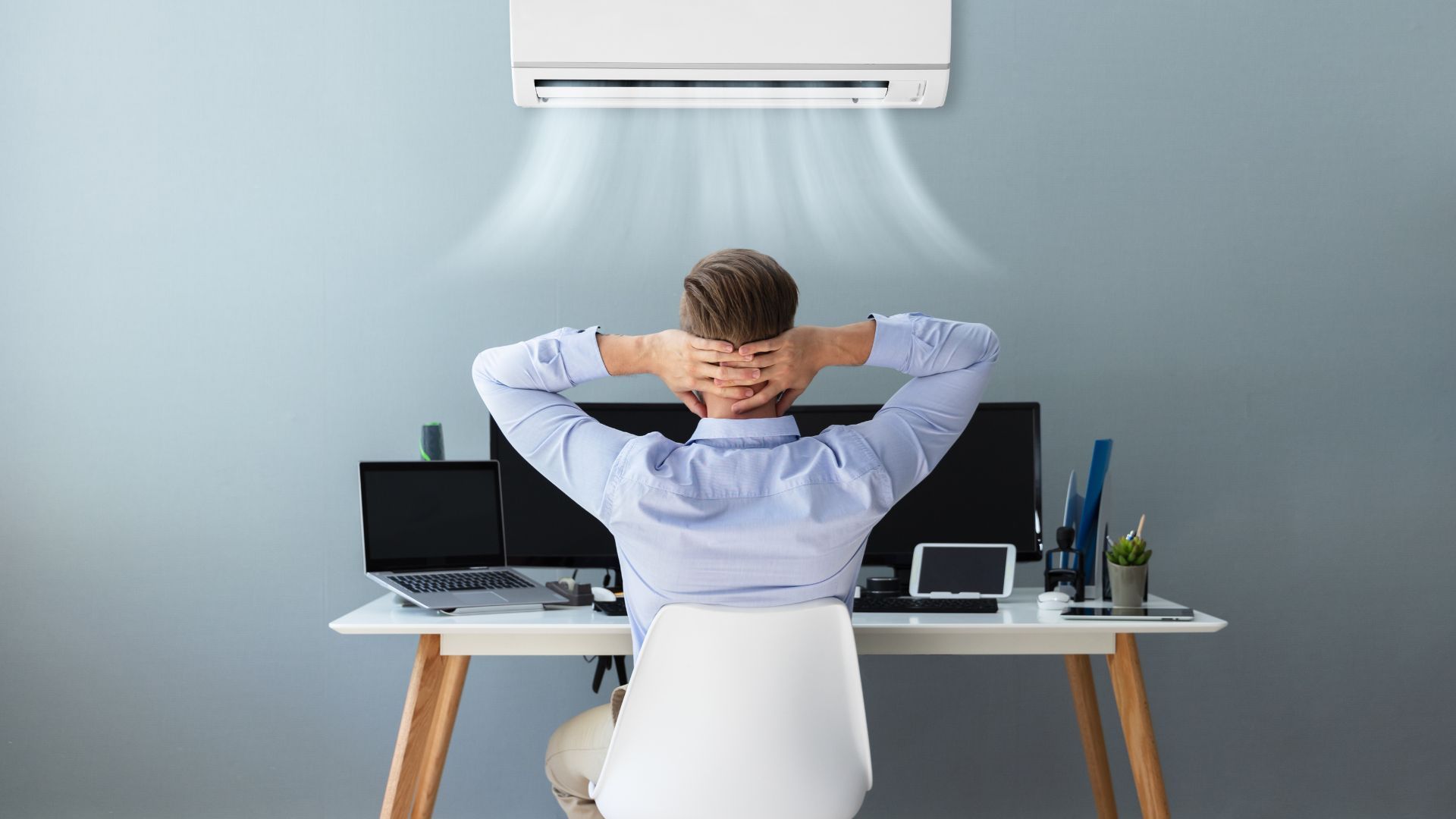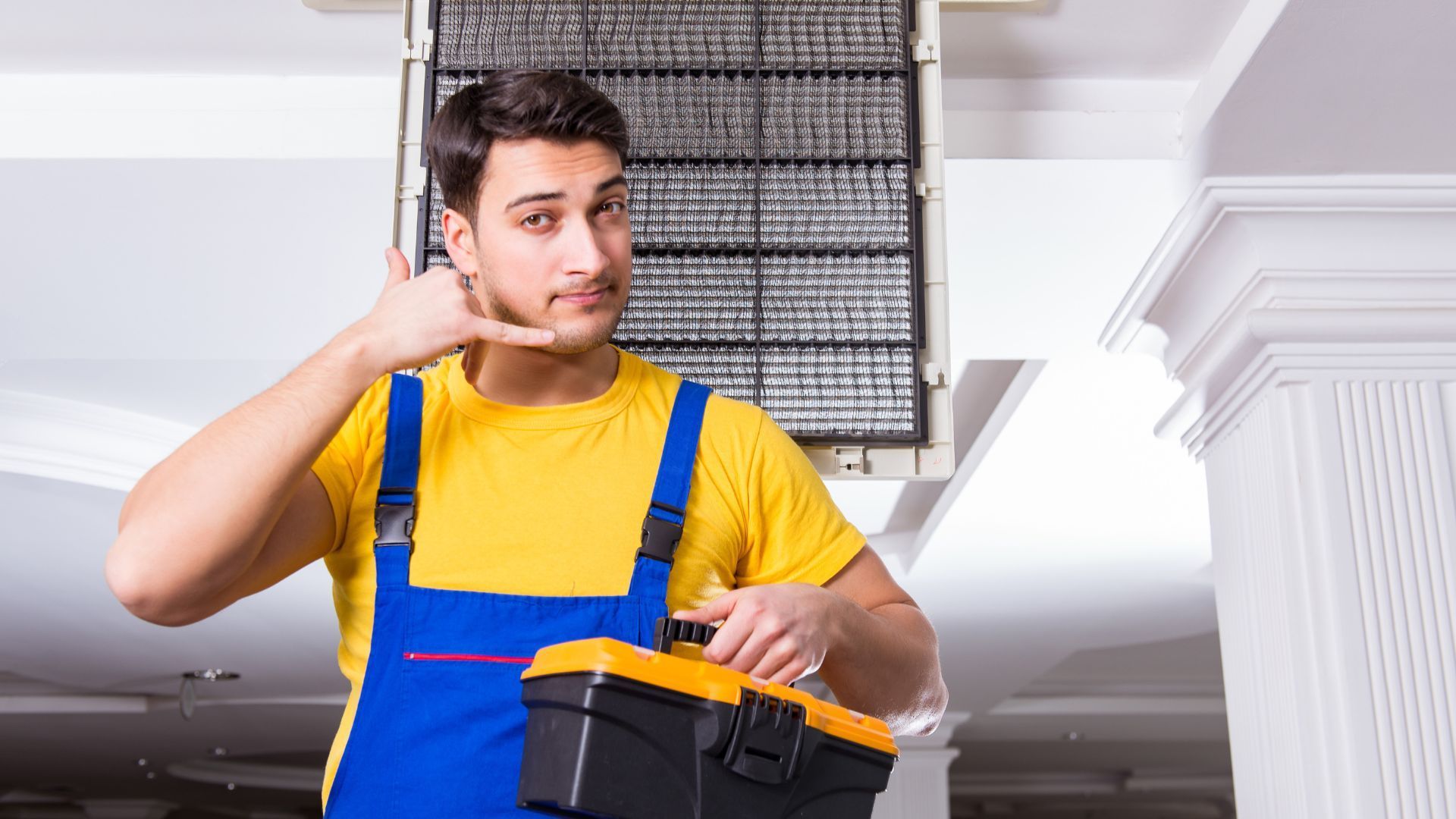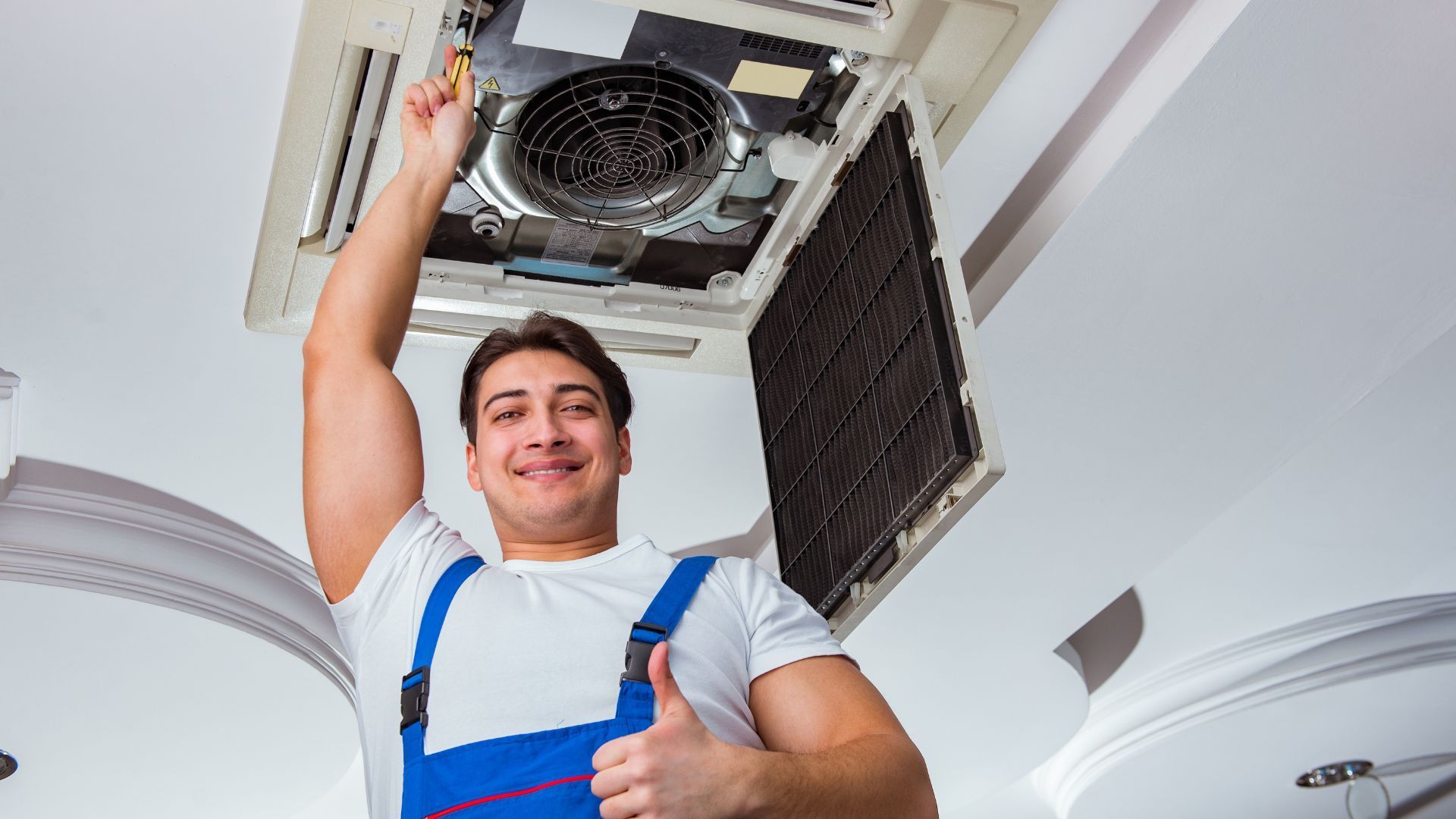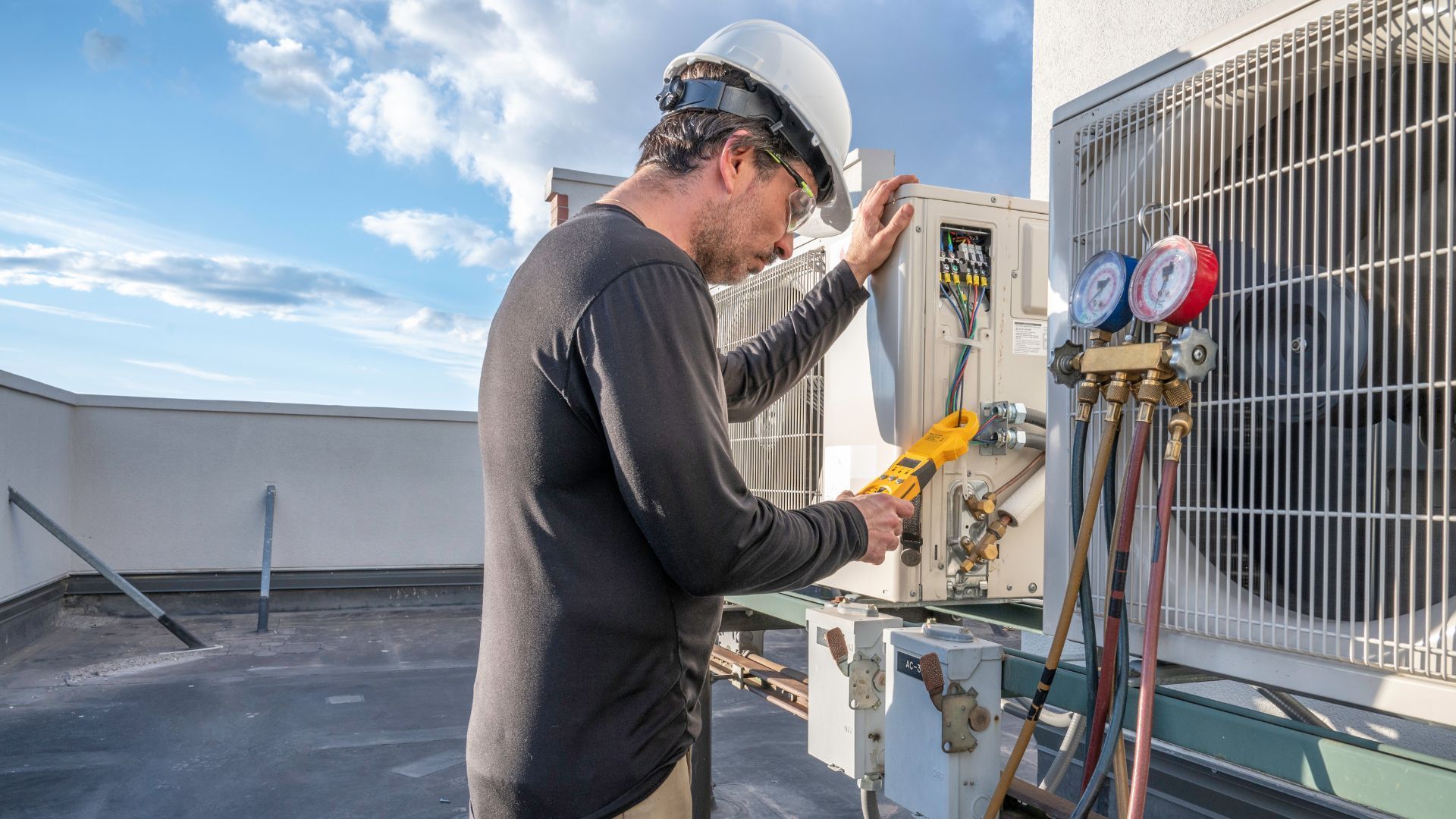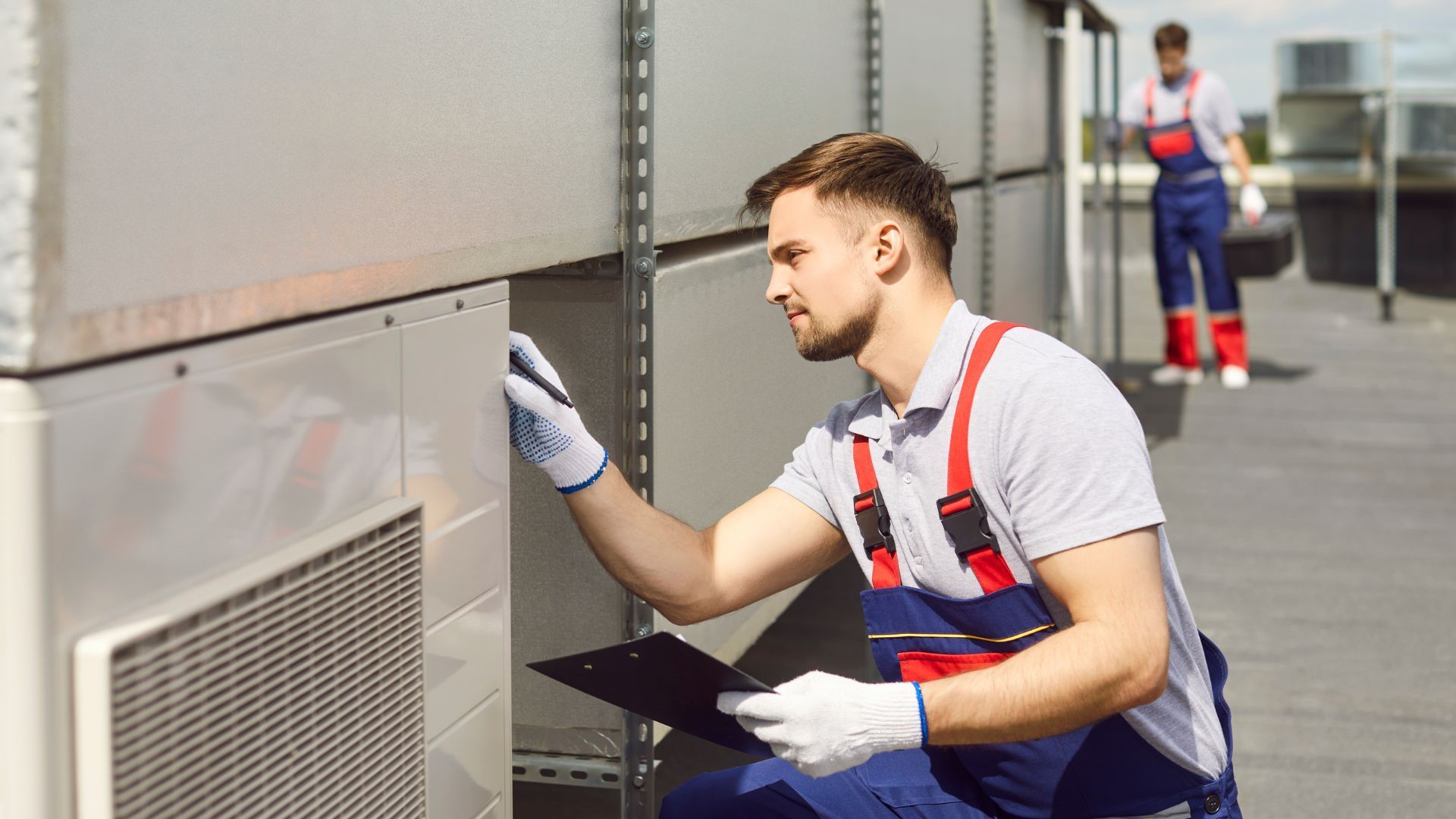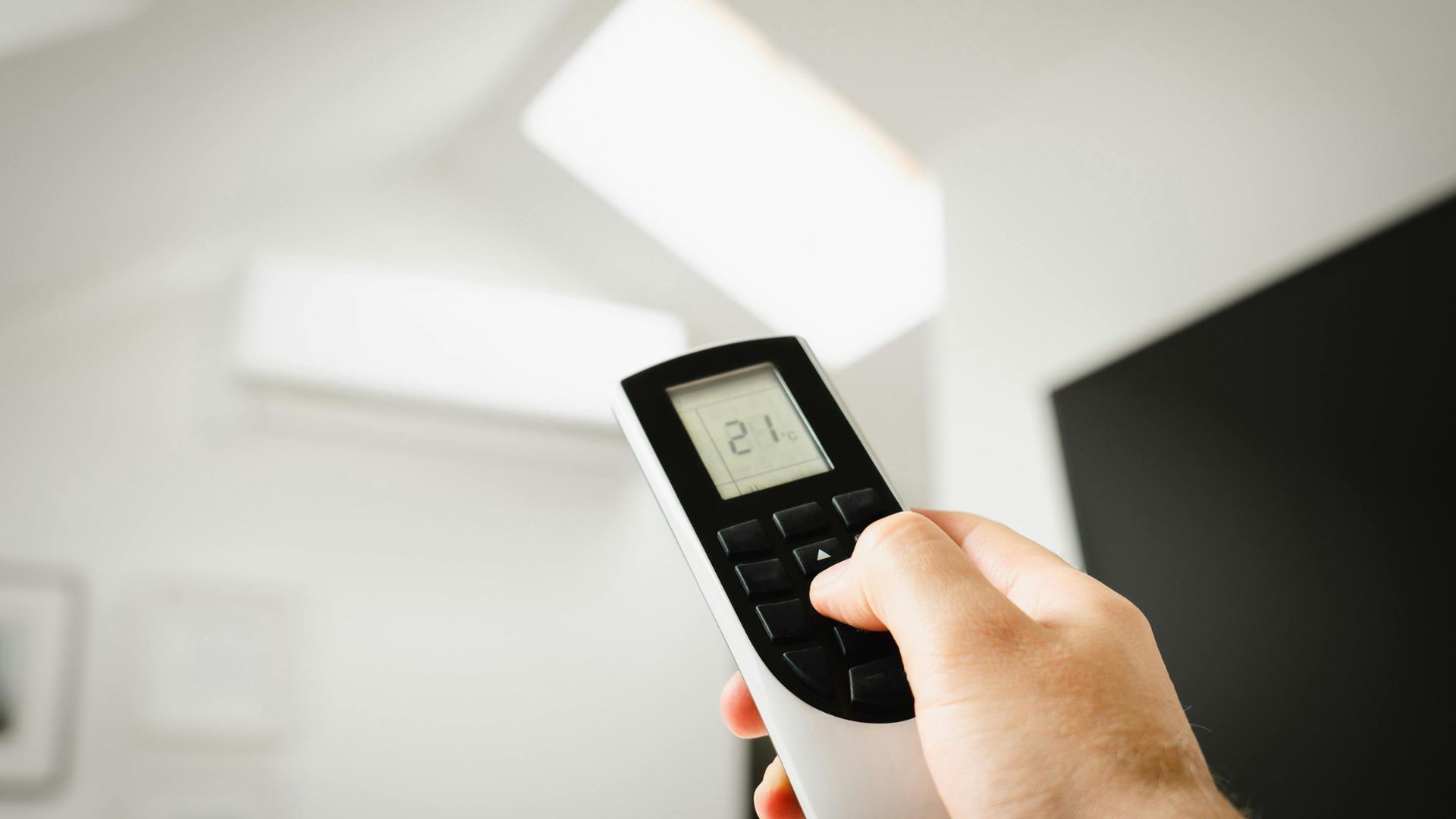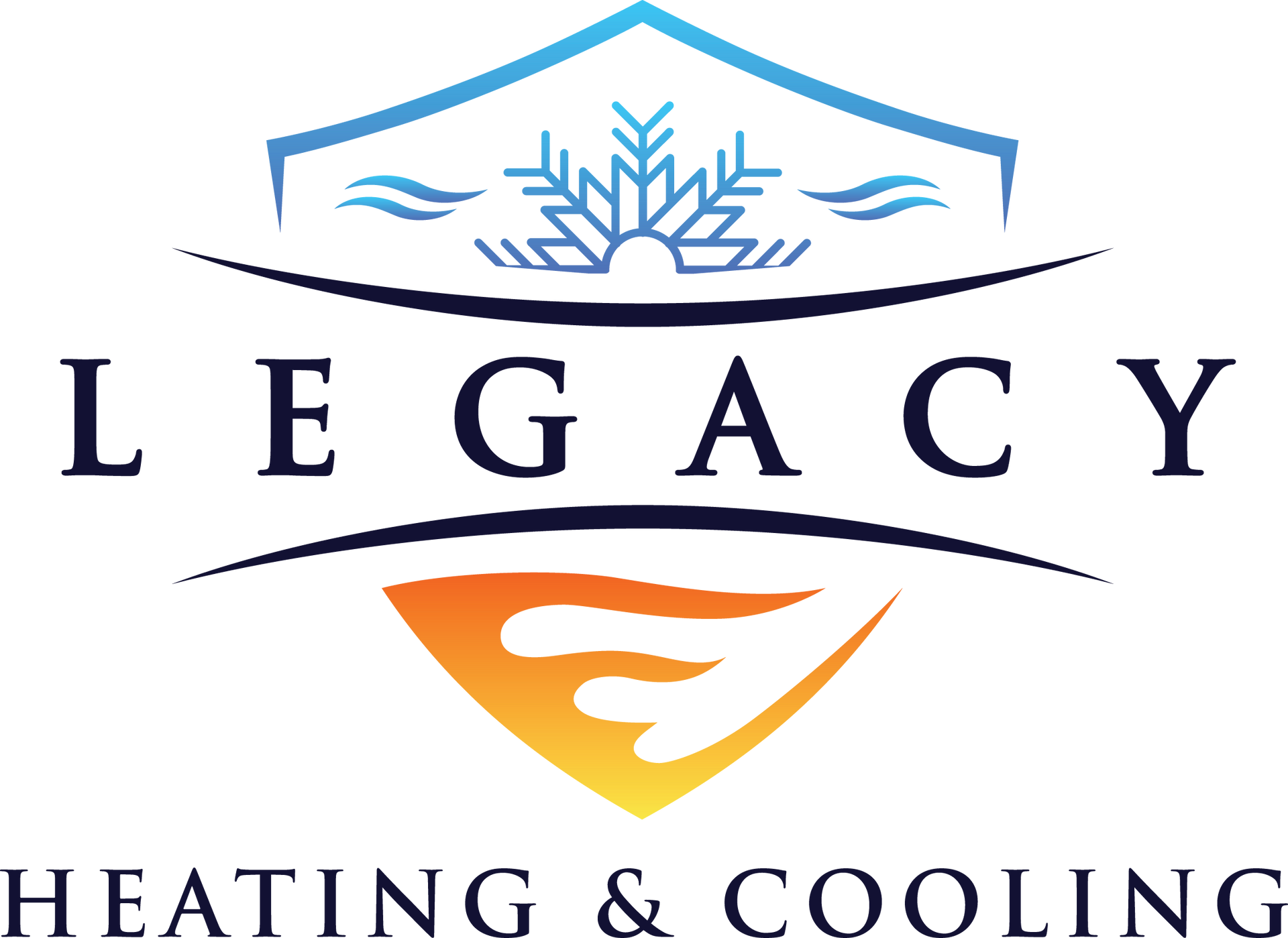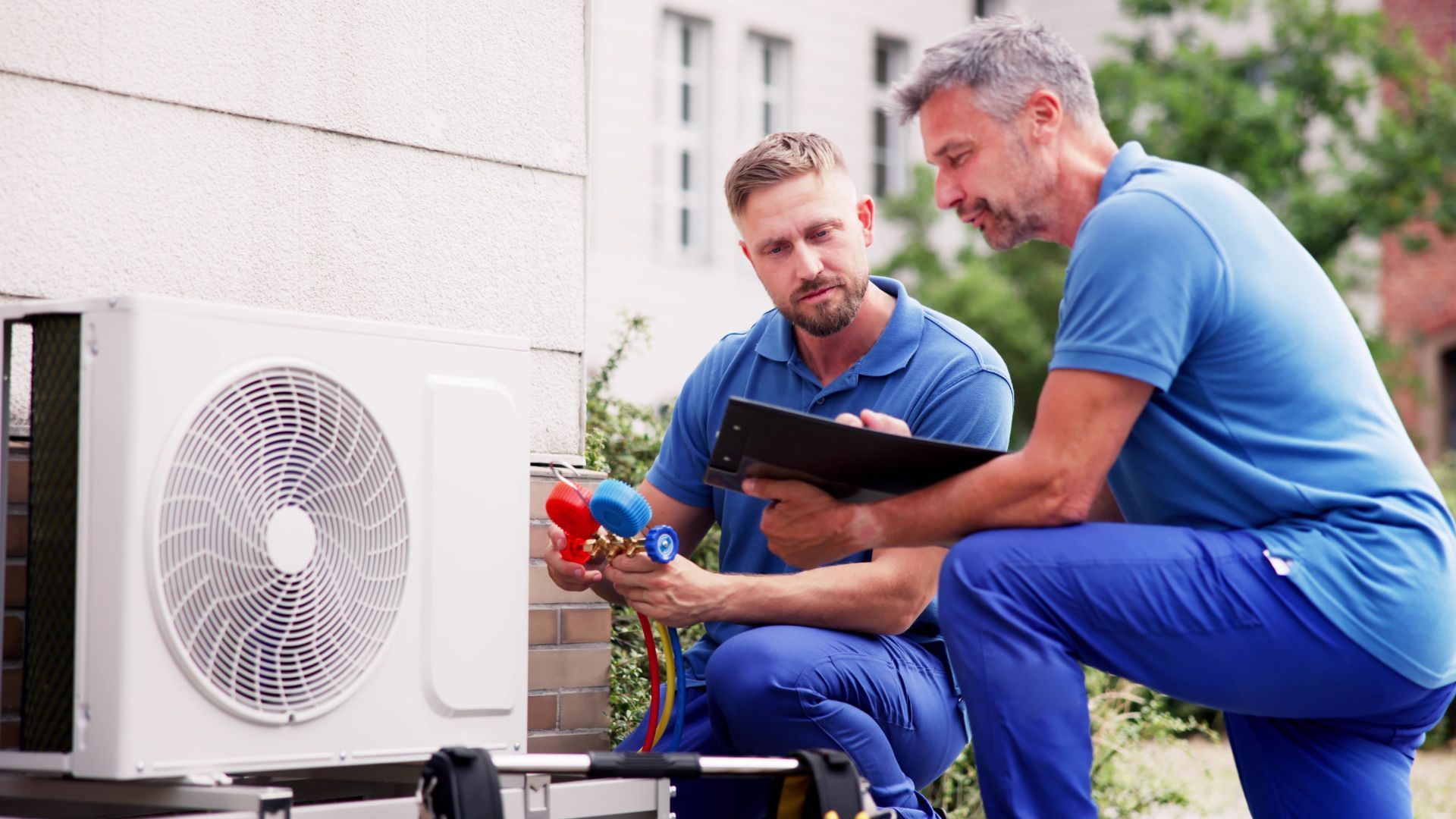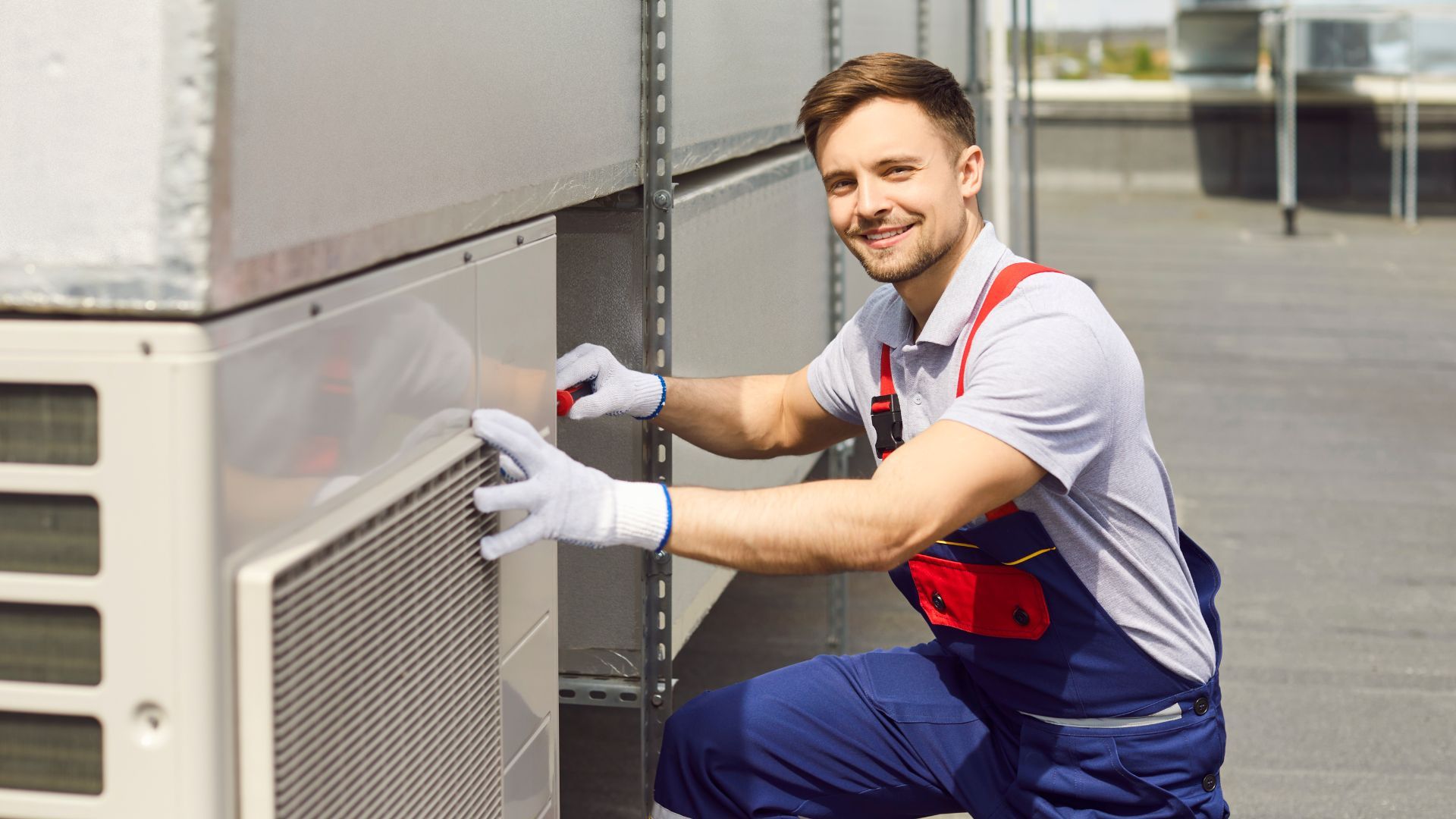Commercial HVAC Installation Benefits in Rhode Island: How Upgrading Boosts Energy Savings and Indoor Air Quality
Commercial HVAC installation refers to the professional replacement or upgrade of heating, ventilation, and air conditioning systems in commercial buildings to improve performance, efficiency, and indoor environmental quality in Rhode Island's coastal-temperate climate. Upgrading commercial HVAC systems reduces energy consumption through the use of higher SEER/IEER-rated equipment, smarter controls, and improved ventilation strategies, while simultaneously enhancing indoor air quality (IAQ) for improved occupant health and comfort.
This article explains the primary energy savings, outlines Rhode Island rebate opportunities, details IAQ and comfort improvements, and explores reliability, longevity, and smart technology benefits for Rhode Island businesses. Readers will learn how modern systems such as VRF systems, rooftop units, and commercial heat pumps deliver measurable operating-cost reductions, how advanced filtration and ERV/HRV ventilation strategies mitigate contaminants, and why professional installation and preventative maintenance are essential for uptime and lifecycle ROI. The sections that follow cover key energy savings and incentive tables, health and comfort improvements from upgrades, reliability and lifespan considerations tied to professional installation, and the role of smart controls and sustainable options in lowering costs and emissions.
What Are the Key Energy Savings from Commercial HVAC Installation in Rhode Island?
Commercial HVAC installation delivers energy savings by replacing legacy equipment with higher-efficiency systems, improving part-load performance with variable-speed compressors, and deploying smarter control strategies that reduce runtime and waste. These mechanisms—improved SEER/IEER ratings, zoned control, and precise thermostat algorithms—translate directly into lower utility bills and reduced maintenance frequency for commercial buildings in Rhode Island. Below are four primary categories of measurable savings businesses typically realize after an upgrade, framed to target quick decision-making and featured-snippet clarity.
- Energy Consumption Reduction: Upgrading to high-IEER systems can lower annual HVAC energy use by double-digit percentages.
- Operating Cost Savings: Smarter controls and zoning reduce fuel and electricity spend through demand-driven operation.
- Maintenance and Repair Reduction: New equipment with better components (compressor, air handler, controls) reduces emergency service calls.
- Incentive Leverage: Utility rebates and prescriptive incentives lower upfront costs and shorten payback periods.
These savings set up two practical explorations: how modern technologies achieve operating-cost declines and which Rhode Island incentives can amplify project ROI.
How Do Modern HVAC Systems Lower Operating Costs for RI Businesses?
Modern commercial HVAC technologies reduce operating costs through specific efficiency mechanisms: variable-speed drives improve part-load efficiency, heat pumps shift energy from space heating to more efficient electricity-driven cycles, and zoned systems prevent conditioning of unoccupied spaces. These systems pair with building automation or smart thermostats to adapt setpoints and schedules according to occupancy, weather, and load, thereby reducing runtime and peak demand charges. Maintenance and commissioning—correct refrigerant charge, calibrated sensors, and validated control sequences—further optimize performance and prevent early failures that drive up lifecycle costs. The table below compares common technologies on typical efficiency metrics and expected operating-cost impacts to help facility managers choose appropriate solutions for office, retail, and warehouse applications.
| Technology | Efficiency Metric | Expected Operating Cost Impact |
|---|---|---|
| VRF systems | High part-load IEER | Significant reduction in zone-level energy use (moderate to high) |
| Rooftop packaged units | Improved SEER/EER | Moderate savings with simpler installation and maintenance |
| Commercial heat pumps | Heating COP / cooling EER | Strong winter and summer savings where electrification is feasible |
This comparison clarifies which technology aligns with a building’s operational profile and lays the groundwork for checking available Rhode Island incentives that affect upfront cost.
Which Rhode Island HVAC Rebates and Incentives Can Maximize Savings?
Rhode Island commercial projects can often capture utility or state-sponsored incentives that lower upfront equipment costs and improve payback timelines; identifying applicable programs before specifying equipment is critical for qualification and pre-approval. Commonly available opportunities come through statewide energy programs and utility prescriptive or custom incentives for high-efficiency equipment, controls, and heat-pump installations. Before committing, owners should verify eligibility criteria, incentive caps, and required documentation with program administrators and coordinate with design professionals to ensure measures meet program specifications.
| Program / Initiative | Eligibility / Equipment Covered | Estimated Incentive / Notes |
|---|---|---|
| Rhode Island Energy commercial incentives | High-efficiency HVAC, controls, heat pumps | Varies by measure; prescriptive and custom options |
| National Grid commercial programs | Performance upgrades and ECMs | Project-based incentives require pre-approval |
| Prescriptive HVAC rebates | Select high-SEER/IEER units and smart controls | Per-unit rebates that reduce the upfront cost |
These incentive outlines help building owners estimate direct incentive value and plan financials; securing professional pre-approval often increases certainty of capture and accelerates ROI.
How Does Commercial HVAC Installation Improve Indoor Air Quality and Comfort in Rhode Island?
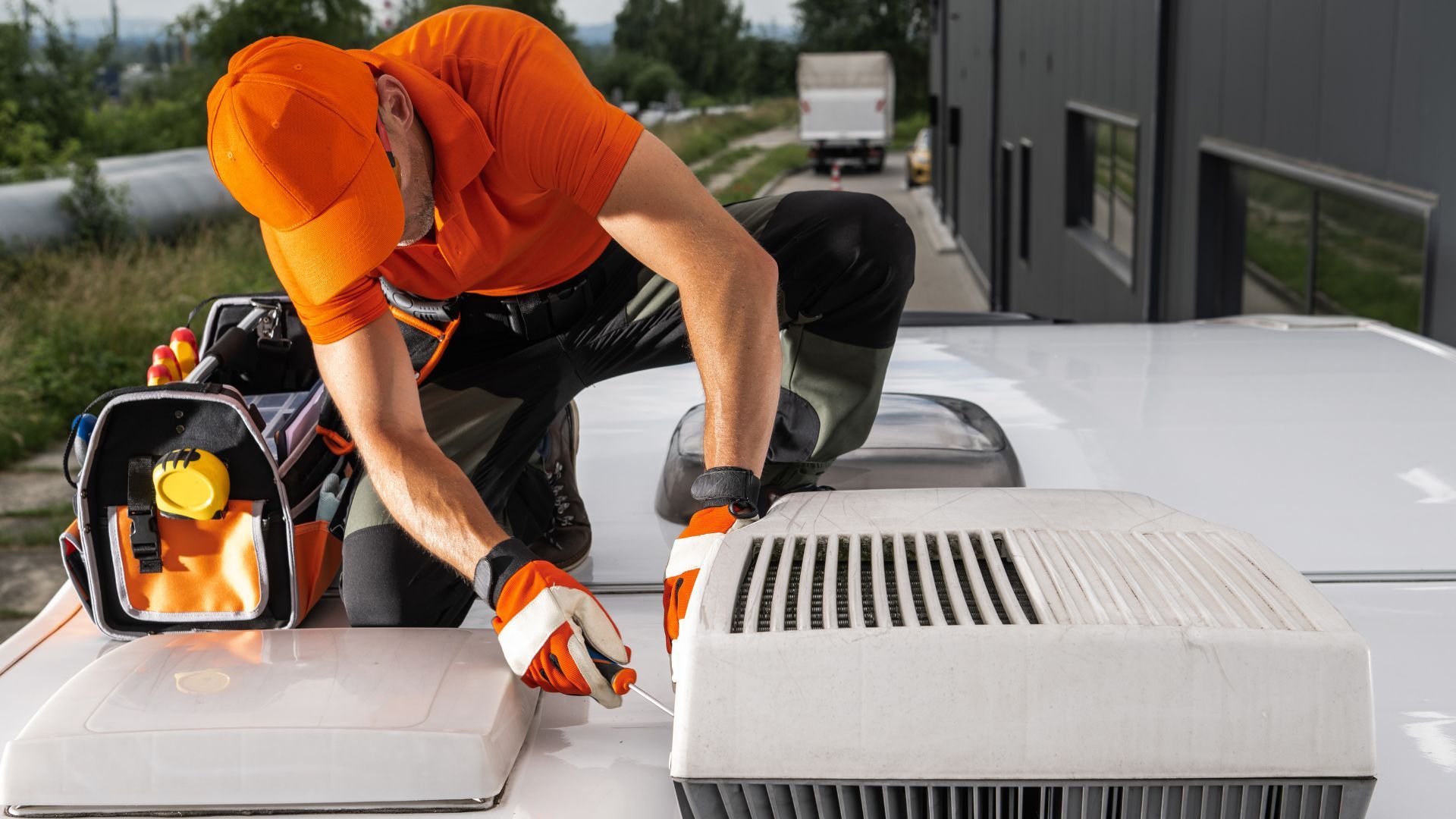
Commercial HVAC installation improves indoor air quality and comfort by integrating higher-efficiency filtration, balanced mechanical ventilation, and better humidity and temperature control, which together reduce occupant exposure to pollutants and stabilize thermal conditions. Filtration upgrades to higher MERV ratings or targeted HEPA integration remove particulates and allergens from return air, while ERV/HRV systems recover energy from exhaust streams and maintain adequate fresh-air ventilation without large penalties to heating or cooling loads. Effective control of relative humidity prevents mold growth in Rhode Island’s humid summers and maintains comfort in winter, while zoning and better air distribution eliminate hot and cold spots that affect occupant productivity. These IAQ and comfort improvements link directly to health and operational outcomes for businesses.
- Reduced Contaminant Load: Advanced filters and ventilation lower airborne particulates and allergens.
- Consistent Thermal Comfort: Zoning and calibrated air handlers keep temperatures uniform across zones.
- Humidity Management: Integrated dehumidification and control prevent microbial growth and discomfort.
Improving IAQ leads to measurable benefits for employee health and productivity, which we examine in the next subsection.
What Health Benefits Result from Enhanced Indoor Air Quality in Commercial Buildings?
Enhanced IAQ from upgraded HVAC systems reduces exposure to common indoor pollutants—volatile organic compounds, dust, mold spores, and allergens—which can lower absenteeism and improve cognitive performance. Studies and occupational health guidance link better ventilation and filtration to fewer respiratory complaints and higher reported comfort, translating into improved concentration and reduced sick leave. For high-occupancy spaces such as offices and retail, tailored ventilation rates and filtration strategies are essential to balance health outcomes with energy efficiency. Practical recommendations include specifying MERV-rated filters appropriate to the system’s airflow capacity and using ERVs/HRVs to provide continuous, energy-conscious ventilation.
How Do Advanced Filtration and Ventilation Systems Maintain Consistent Comfort?
Advanced filtration and mechanical ventilation maintain comfort by managing both air cleanliness and delivery, using systems that balance pressure, airflow, and temperature to avoid drafts or stagnant zones. Heat recovery ventilators (HRVs) and energy recovery ventilators (ERVs) transfer sensible and latent energy between exhaust and supply air streams, preserving conditioned temperatures and humidity while providing fresh air. Filter selection requires trade-offs—higher MERV ratings capture finer particulates but can increase pressure drop and fan energy—so systems must be sized and specified with the air handler and fan capacity in mind. Controls that monitor CO2, humidity, and occupancy help modulate ventilation rates to maintain comfort while minimizing energy use.
Consistent comfort requires integrated design: filtration, ventilation hardware, and controls must be specified together and commissioned to meet both IAQ and efficiency goals.
Why Is System Reliability and Longevity Important for Commercial HVAC in Rhode Island?
System reliability and longevity matter because downtime disrupts operations, emergency repairs are costly, and premature replacement increases lifecycle expense versus planned capital investment. Reliable HVAC systems maintain occupant comfort and safety, prevent business interruptions, and protect sensitive inventory and equipment that depend on stable environmental conditions. Lifecycle cost analysis often shows that paying for higher-quality equipment and professional installation yields a lower total cost of ownership through fewer failures and extended service intervals. The following list outlines why businesses prioritize reliability as a core criterion when evaluating HVAC investment choices.
- Uptime and Business Continuity: Reliable systems reduce operational disruptions and lost revenue.
- Cost Avoidance: Fewer emergency repairs lower unplanned maintenance spending.
- Lifecycle ROI: Extending useful life through quality equipment and service improves capital efficiency.
Next, we examine how professional installation specifically reduces downtime and long-term repair costs for commercial systems.
How Does Professional Installation Reduce Downtime and Repair Costs?
Professional installation reduces downtime by ensuring correct equipment sizing, proper refrigerant charge, calibrated controls, and thorough commissioning—actions that prevent many common early-life failures and performance shortfalls. Proper installation validates that meronyms of the HVAC system—compressor, condenser, evaporator coil, and air handler—are integrated and operating to manufacturer specifications, which supports warranty coverage and reduces failure risk. Commissioning identifies and corrects issues before handover, minimizing post-install corrective service calls and improving first-year performance. For building owners, engaging qualified contractors and insisting on commissioning typically results in fewer emergency service calls and a more predictable maintenance profile.
What Factors Extend the Lifespan of Commercial HVAC Systems?
Extending HVAC lifespan depends on disciplined preventative maintenance, timely filter and refrigerant checks, use of quality replacement parts, and monitoring to detect faults before they cascade into major failures. Regular tasks—filter changes, belt and motor inspections, coil cleaning, and drift checks for setpoints—reduce stress on compressors and fans and preserve heat-exchange efficiency, thereby lowering energy use and repair frequency. Warranty validation often requires documented professional service, so maintaining service records and following manufacturer maintenance intervals helps protect replacements and major component warranties. Implementing remote monitoring and an annual commissioning cadence further extends useful life by addressing issues early and optimizing system operation.
A maintenance-focused lifecycle approach supports predictable budgets and maximizes return on investment for commercial building systems.
What Role Does Smart Technology Play in Commercial HVAC Benefits for Rhode Island Businesses?
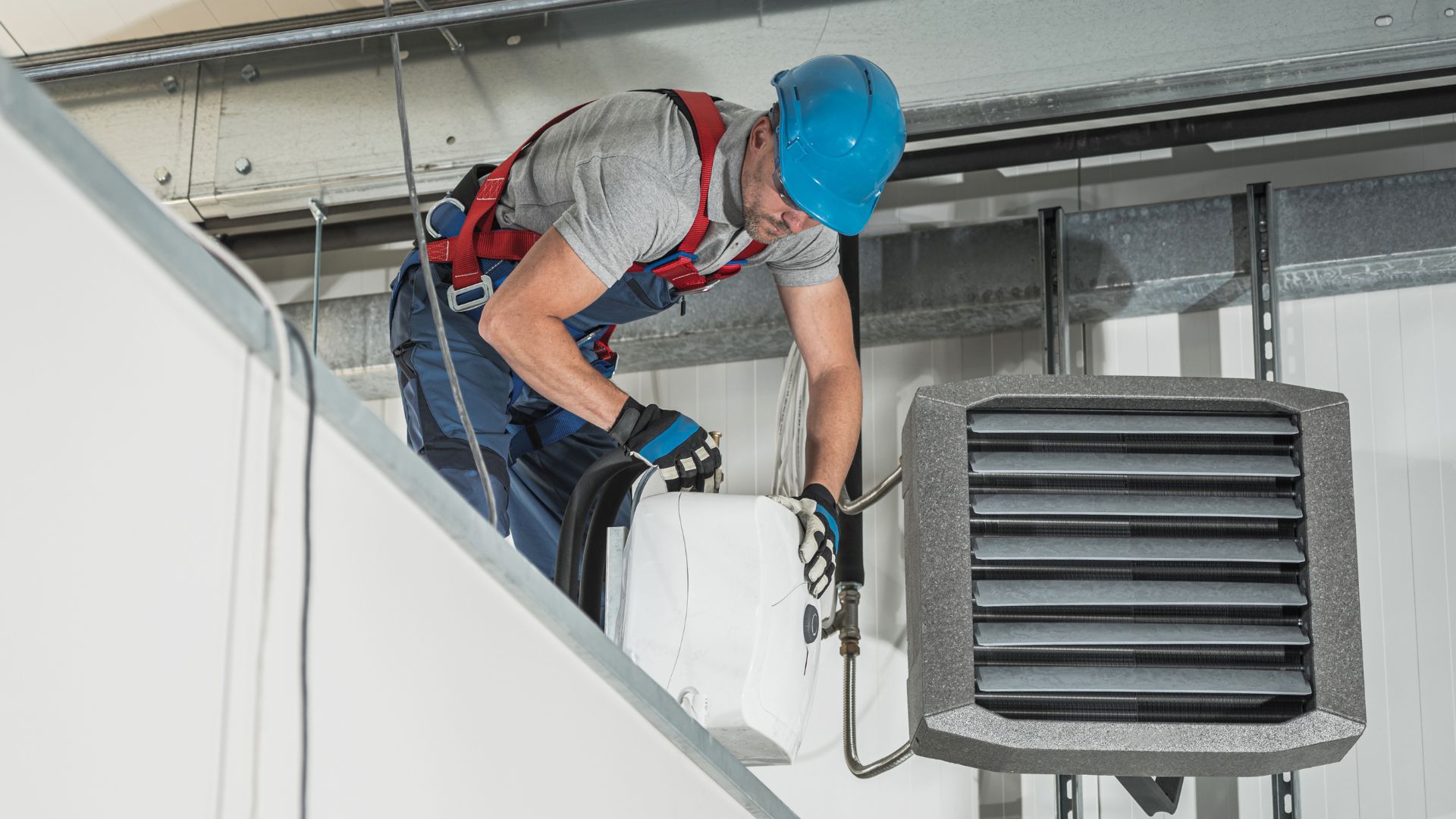
Smart technology amplifies HVAC benefits by enabling remote monitoring, analytics-driven fault detection, and automated control adjustments that reduce energy use and improve responsiveness to occupant needs. Building management systems and smart thermostats communicate with components—thermostat, air handler, and compressors—to optimize schedules, apply adaptive setbacks, and detect performance drift. Remote monitoring provides early alerts for anomalies (pressure, temperature, refrigerant faults), allowing technicians to address issues before failures occur and reducing emergency service calls. Below are three key smart-technology benefits with a brief operational example.
- Early Fault Detection: Analytics identify abnormal patterns and trigger alerts for proactive service.
- Optimized Scheduling: Occupancy-based control reduces run hours and peak demand charges.
- Performance Analytics: Trend data supports targeted retrofits and efficiency improvements.
An example: remote monitoring that flags rising compressor current can prompt a filter or coil cleaning before the unit trips, reducing downtime and service costs.
How Does Remote Monitoring Enhance HVAC Efficiency and Control?
Remote monitoring enhances efficiency by continuously collecting system data—temperatures, pressures, runtimes—and applying fault-detection algorithms that pinpoint issues requiring attention, thereby preventing sudden failures and unnecessary energy waste. These systems reduce the number of emergency service calls by enabling technicians to diagnose problems remotely and schedule targeted maintenance, improving first-time-fix rates. Remote alerts also allow facility managers to adjust setpoints promptly in response to weather or occupancy changes, translating to immediate energy savings. Data privacy and secure communication protocols should be part of any remote-monitoring specification to ensure operational integrity and compliance.
These capabilities dovetail with sustainable options that further reduce environmental impact and operating costs.
In What Ways Do Sustainable HVAC Options Reduce Environmental Impact?
Sustainable HVAC options—high-efficiency heat pumps, low-GWP refrigerants, and system-level electrification—lower a building’s direct and indirect carbon emissions by reducing fossil-fuel consumption and improving efficiency. Heat pumps shift heating loads away from combustion, lowering scope-1 emissions where electricity decarbonization is underway, while low-global-warming-potential refrigerants reduce climate impact in the event of leaks. Efficiency gains from modern equipment and controls also reduce overall energy demand, which decreases emissions associated with electricity generation. Incentives that favor high-efficiency and low-emissions measures can improve economics and accelerate adoption.
For building owners considering upgrades, combining smart controls with low-carbon equipment produces the largest, most durable emissions reductions while often improving lifecycle economics.
